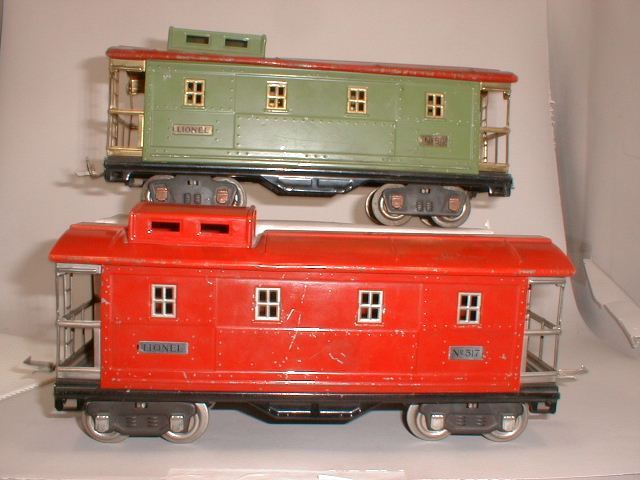 This Standard Gauge 517 caboose proves Lionel had considered using the new couplers on standard gauge trains. The caboose has all the characteristics of a 1935 car. Red paint, nickel plates, and nickel observation railings are 1935-36 production. The bottom of this car is different from any other known car. Below you can see pictures of the differences along with comparison photos of a normal 517 caboose. 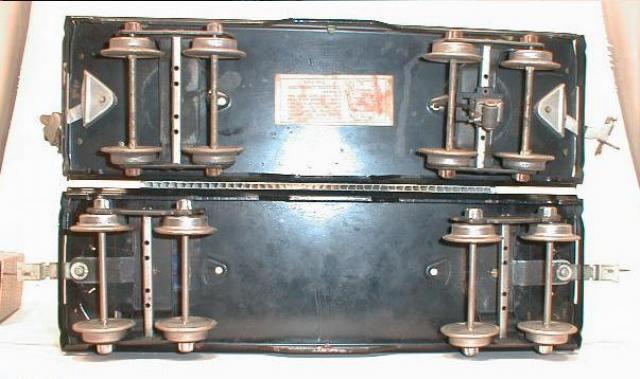 In the photo above the unusual caboose is sitting under a normal 517 caboose from 1932. This car has a heavily modified frame to accept the box coupler and it's self centering device. The trucks are mounted closer to the ends of the car. A large rectangle was cut out of the frame where the original truck mounting hole was and then replaced with a new piece with holes closer to the ends. The triangle shaped truck block has been flattened with a press. Note the tongues coming out of the trucks. 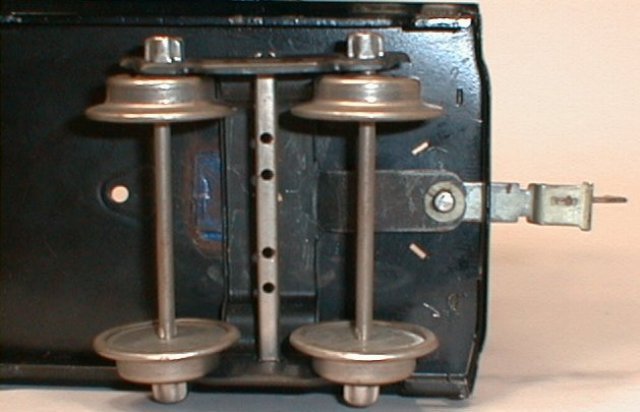 The photo above shows the underside of a truck and the tongue. This is the same method used to attach box couplers on O gauge cars. See this page for pictures of 800 series O gauge frames. Note there is no evidence a coupler pocket was ever on this car. There are no scratches around the slots or the coupler pin hole. You can see the rectangle of new metal in this picture. It has bluing on it. Bluing is used when working with sheet metal so scribed lines show up better. 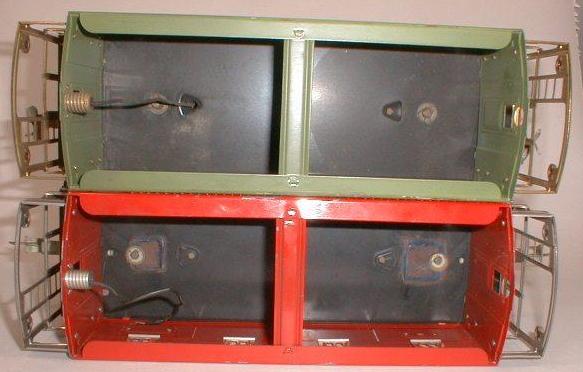 Here's a shot showing the inside of the car with the normal car on top. The truck attachment clips are correct for 1935. 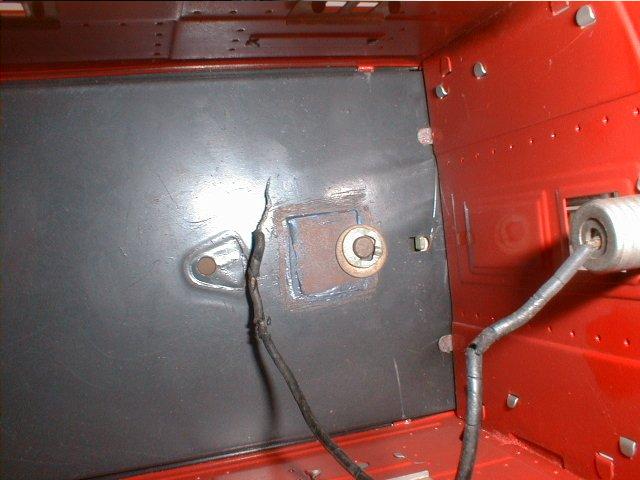 This is a closeup of the inside of the car. The slot the coupler pivots on is punched into the frame. You can see the added rectangle really well in this picture. 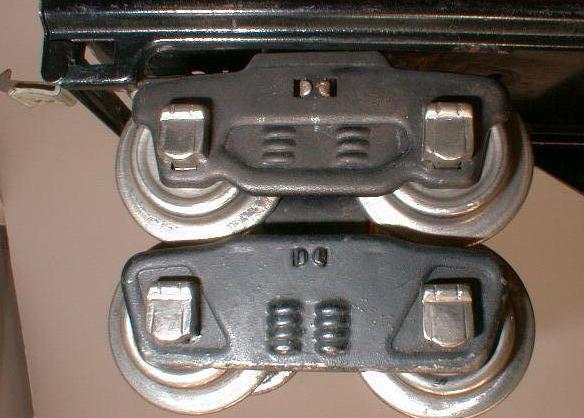 Here's a comparison of the prototype truck with a regular truck. Note the difference in the embossing to create the springs and the shape of the truck. The prototype truck has a more realistic appearance. 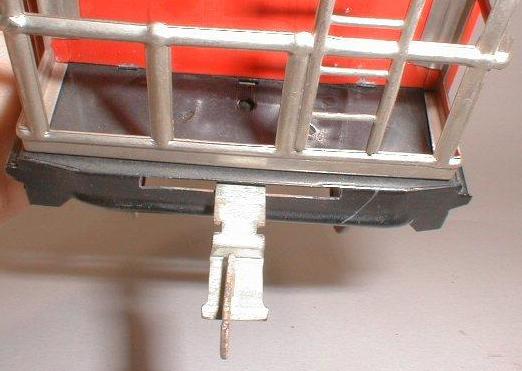 This photo shows the end of the car from above. There are no scratches around the slots for the latch coupler pocket. There should be a cast hood on the coupler. It was missing when the car was purchased from the original owner's grandson. 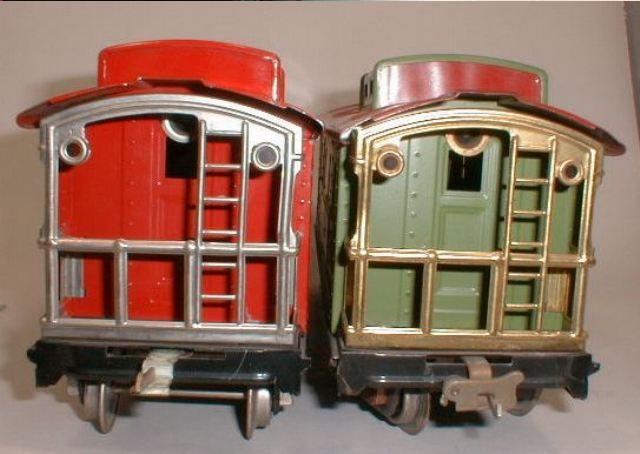 The car end is compared with a regular production car in the above photograph. Note the slot the coupler comes out is wider to accommodate the box coupler. Compare where it lines up with the railings above. This unusual car creates as many questions as it answers. Lionel was obviously considering putting box couplers onto the standard gauge line. However Lionel had not introduced a new item in Standard gauge since 1933. In order to convert the line all the frames would have to be changed. The whistle mounting holes might need to be moved, the tank car would need body modification because the trucks would be mounting under the tank supports. Other obstacles might come up necessitating changes to cars, I don't even know if this car would clear a switch. Whatever the problems for the engineering department, Lionel was emphasizing O gauge and introducing realistic trains like the 752E City of Portland and the new for 1935 Hiawatha. The 700E scale Hudson was already in the tooling stages. Lionel decided to abandon the standard gauge line and never added box couplers. While examining this car and talking with other collectors, I have come to the conclusion that other cars MUST have been made. If Lionel went to the trouble of making one of these cars, they would have made a few to see how well they ran together. Also why wasn't this new, better looking side frame used? They went to the expense of creating it, it should have been easy to put into production. Every month a toy train that is odd or unusual in some way will be featured. These may be production samples, paint samples, preproduction mockups, factory errors or rare department store specials. If you have an item you would like to have featured in this series, drop me an e mail by clicking on my name below.
Follow this link to the Train99.com Home Page ã 2002 by Terry Gibbs. All rights reserved.
|